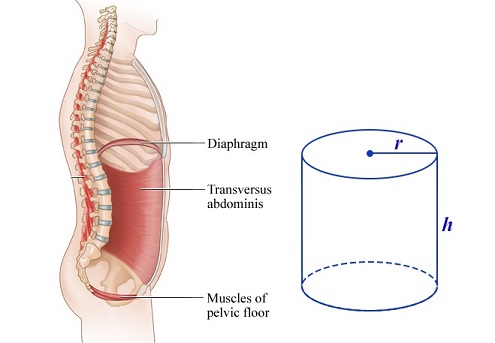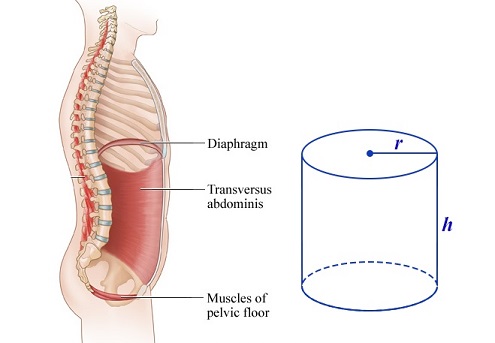How to activate your core muscles!

Have you been told to pull your belly button to your spine before moving? Chances are if you’ve had a back injury and seen a health professional over the last 25 years that you have. You’ve possibly also been told to breathe as you lift weights and to not hold your breathe. Maybe you’ve even been told to take a big belly full of air to lift?
In this blog we are going to discuss why these are incorrect, and the best way to achieve a stable spine when lifting weights that are challenging.
Let’s start with the anatomy of the “core” muscles (picture above). In particular the deep muscles of the core which are deep to the rectus abdominis (6 pack) and obliques. There are four main muscle/muscle groups we are concerned with here. The diaphragm, the transverse abdominis, the pelvic floor and the multifidi. As you can see in the diagram below these muscles form a cylinder. This cylinder is capable of being pressurised which creates stability for the lumbar spine (lower back).
How? When breathing in, the diaphragm pulls down to create a vacuum in the chest. This allows air to flow into the lungs as we breathe in. By pulling down, it lowers the height of the cylinder. We have X amount of pressure in a cylinder, and then we make the height of the cylinder smaller without changing the other dimensions, the pressure increases within the cylinder due to the same matter being present within a now smaller cylinder.
So how do we brace effectively for lifting heavy loads? I’ll show you how. Try it for yourself. Sit or stand up straight (It is important that the opposite ends of the cylinder are facing each other). Place both hands cupping around your midsection and squeeze gently so you feel what your core is doing.
- We must first tense the muscles of the core, do this by forcibly exhaling out through your mouth. Really empty all the air out. The transverse abdominis pushes inward. The cylinder pushes in. You can feel this.
- Now hold this contraction and take a half breathe in through your nose. The diaphragm pushes down and the pelvic floor reflexively pushes up. Feel your cylinder expand slightly as it pressurizes.
- You’ve created now a stable core ready to pick up something heavy safely!
You can now understand that if you breathe in or out as you lift, you are compromising the stability of your lower back. During a heavy lift you must hold the pressurized cylinder that you prepared before you lifted. The need for this kind of bracing strategy is primarily for lifting objects that are heavy. The extent of bracing is relative to the object being lifted. For example you should certainly be breathing easily with less bracing when running a long marathon, while you should certainly not be breathing easily when lifting your maximum weight, and if you are somewhere in between like perhaps you are doing a circuit class with medium weights you can brace to a lesser extent, and breathe in between reps.
Some health professionals are concerned that this technique causes a Valsalva response – which causes changes in haemodynamics such as a temporary increase in blood pressure. Which is true. But hey, why are you doing heavy deadlifts if you have an acute heart condition or other conditions that may be affected by increases in blood pressure?
Once you understand how to brace using breathing, it’s time to learn how to lift correctly by using the mobile areas that surround the stable core area. That’s a blog for another time! If you want help with manual handling, back rehabilitation, or injury prevention – come see an Exercise Physiologist at Hunter Rehabilitation and Health.
Here’s another article on the subject if you want to read more!
https://www.elitefts.com/education/breathing-is-not-bracing/

